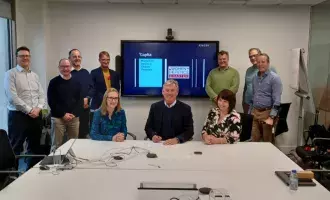As the motor finance sector seeks to bounce back, we take a look at how the pandemic has changed expectations of digital consumers and what the new normal could look like.
The industry needs to embrace transformation if it is to return to growth and serve new and future consumers who choose digital channels because of limited access to voice services, caused by the pandemic. However, a perfect storm was already coming to the sector prior to the pandemic, which was powered by a shift in consumer buying behaviours and an increase in the number of under 25s who opt to lease rather than purchase.
A transformation is now needed more than ever to survive what is being forecast as the biggest recession the UK economy has seen, and to deliver resilience to future interruptions in trading. The consumer car finance market fell by 27% in March as the pandemic took hold and things got worse in April as new car sales plunged by 97% to the lowest levels since 1946. The current expectation is for a ‘U-shaped’ recovery following a dramatic recession.
The sector’s success has always been strongly tied to new car sales. As we all adjust to new ways of home-working and a potential increase in non-public transportation for those who need to travel, the industry needs to pivot to serving customers digitally - providing accessibility with the right cost base. There could also be a significant shift to offshore locations to rebalance the cost to serve at a time when personal finances will be under pressure.
Meanwhile buying behaviours outside of the industry have been recast by the digital business models of Amazon et al, who have redefined consumers’ expectations of online convenience and personalisation. Digital leader Amazon have seen a 26% increase in sales in Q1 so what can the motor finance sector learn from their success and how can they pivot to a more flexible and digital customer experience.
If digital convenience is now fundamental in the mindset of consumers then the motor finance industry should interrogate those journeys that feel dated to a digital generation. If you’ve ever sat in the office of the dealer whilst the business manager or finance manager hands over umpteen pieces of paper for signing, then you know what I’m talking about. We know that 50% of new car buying begins online but over 90% ends offline, so why the big disconnect and can the industry finance online? Those who can are set to reap the rewards from customers who prefer digital.
Responses that fix part of the problem do the industry no long-term favours
So far the sector’s response was one of piecemeal digitisation, perhaps via one-off experiments with new websites or webchat services. Fragmented online experiments can never deliver the true seamless, end-to-end digital transformation the industry requires, if it is to appeal to new and future consumers and return to growth. We believe that the post-pandemic challenge is an opportunity to go further.
So what might a good customer journey look like in this field?
One answer is to seamlessly integrate a coherent finance experience online whilst the customer is browsing their next purchase. Most companies currently offer a quoting system but they fall short of tailoring that experience for individual customers and their financial position. There is no room for negotiation or for customers to review a number of options to ensure they find the right kind of product with the right payments. Over 90% of finance is done through a PCP but, as we explored in ‘the changing face of motor finance’, is this because it’s the only option offered?
We believe a high-tech approach with a human touch would change the industry for the better, make it more resilient and appeal to a growing number of under 25s who are the future of the market.

Richard Nicholls
Business Development Director, Capita Customer Management
Richard specialises in helping some of the UK’s leading brands to seek better outcomes through contact with their customers. This could be through digitisation and transformation of traditional operating models, through to increasing revenue and catering for vulnerability. Richard has over 15 years’ experience working in the outsourcing sector, primarily within Financial Services, Utilities and Retail.







